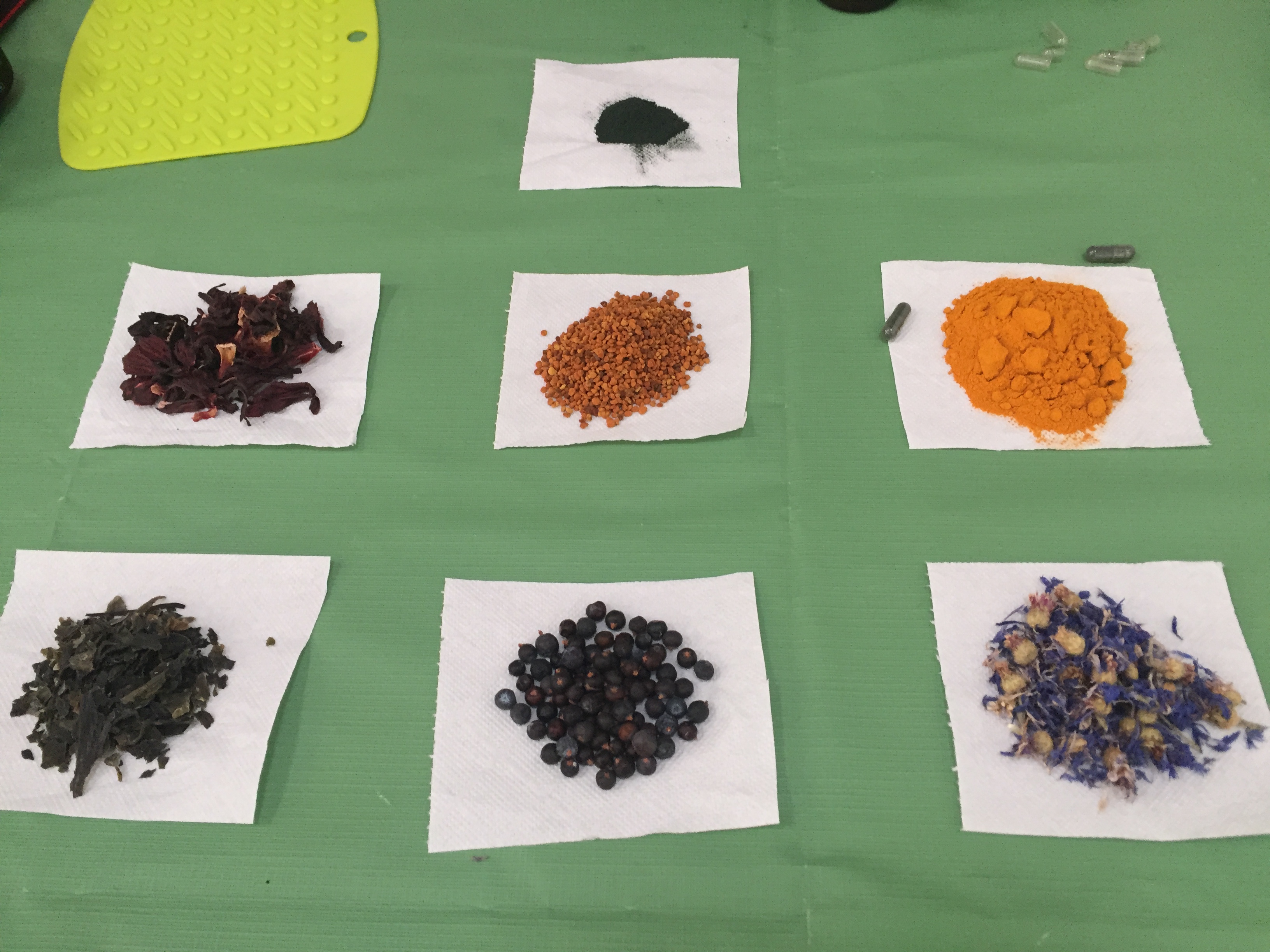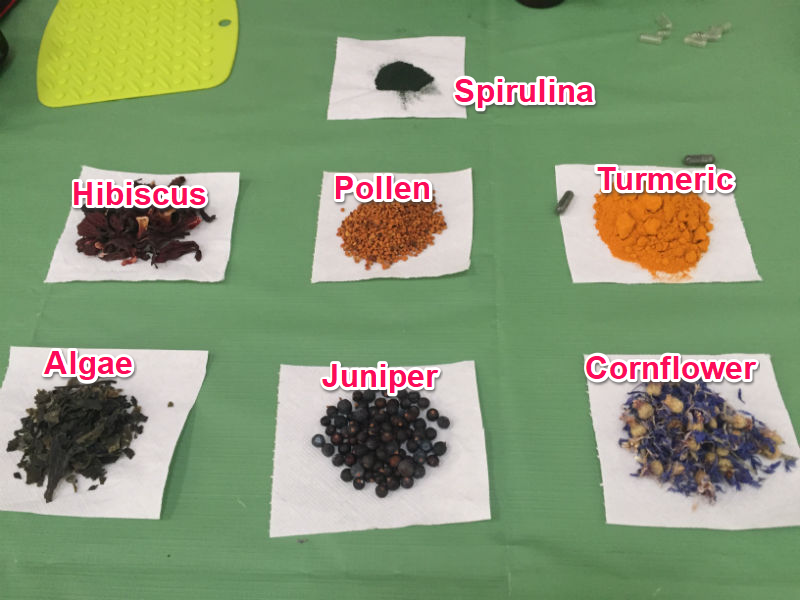Table of Contents
Week 4: Bio Dyes and BioFabrics
Assignment
The students can work in group, identifying tasks and splitting them, as long as they all proof they are able to carry out each task.
Explore at least:
•1 natural dye or bacterial dye
•1 crafted or grown material
My work
As Cecilia Raspanti explained in past class, this class will focus on exploring new materials and different dyeing thecnics from the traditional ones. We will start with natural dyes with extracts from vegetals, roots…we didn't do bacterial dyes as we don't have a biolab, but we biofabricate materials.
So, the process that our FabLab followed was;
- Dyes: Natural dyes &
bacterial dyes - Base materials:
animal fibersand vegetable fibers - Mordants: Alum
- Color modifiers: Bicarbonate (Baking soda) and vinegar
- Dyes from roots, leaves, flowers:
- coffee, hibiscus flowers, turmeric root extract, green tea, red plum leaves, onion peels
- Some mineral pigments
- BioFabricating materials
- The biomaterials we did are:
- Bioplastics (gelatine, starch , glicerine)
- kombucha
I love these recipients of pigments, love the colorful look. So, we decided to make some similar with the natural dyes
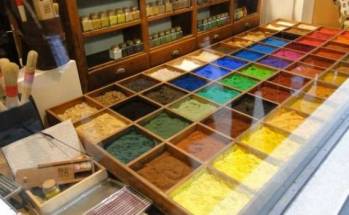 | 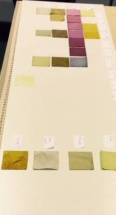 | 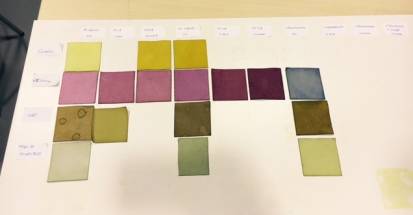 |
For preparing the textile coupons we treated a piece of cotton fabric with 50 grs of alum into warm water during at least 1 hour. After this time we let the fabric dry, and Ana lasercutted the square models

the onion leaves turn a beautiful orange color
We made teas with all of them.
 hibiscus flowers give a spectacular fuchsia color
hibiscus flowers give a spectacular fuchsia color
The tests we did were:
- Submerge the fabric in the first infusion a few seconds
- Submerge the fabric in a second infusion a few seconds
- Submerge 12 hours in the second infusión
Afterwards, we altered the pH of the infusions with bicarbonate and checked the changes that in some cases were surprising.

Last, we added vinegar in order to see changes and check the different shades. 
Kombucha
One of our fabfriend, Veronica, gave us a piece of kombucha (and a delicious tea with it ;)
She explained us how to grow the kombucha, with black tea, sugar and no metal materials to handle the kombucha.
Sep 21, 2017

After one month (oct, 19th), we decided to get the scobby out of the box and let it dry about 1 week

And, on October, 23th, it looked like these pictures

